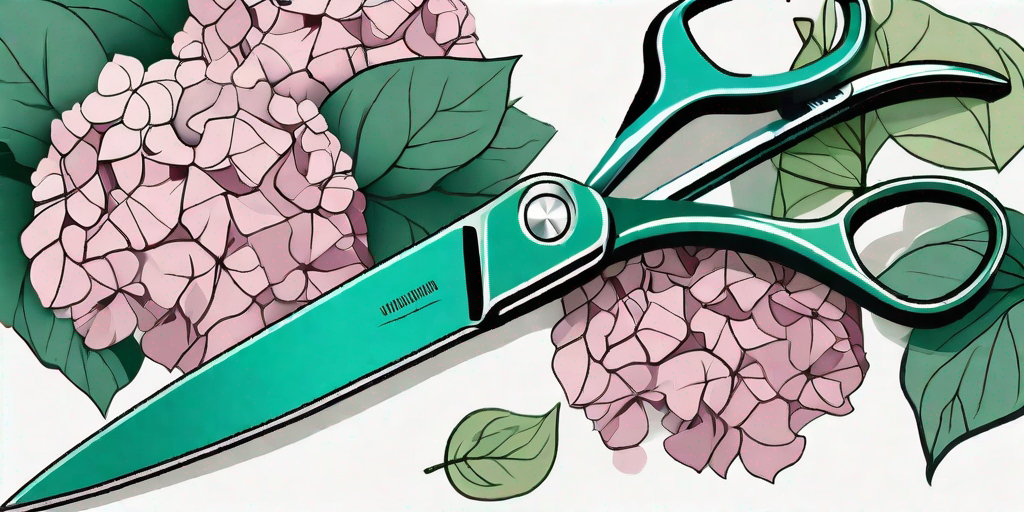
Welcome, green-thumbed friends and budding horticulturists! If you're here, it's likely because your hydrangeas are looking a bit down in the dumps. But fear not! With a bit of deadheading know-how, you can transform your garden from a floral flop to a blooming bonanza. So, grab your gardening gloves and let's get down to business.
The Art of Deadheading
Before we dive into the nitty-gritty, let's clear up what deadheading actually is. No, it's not a morbid fascination with skulls, but a gardening technique used to encourage plants to focus their energy on new growth. By removing the old, spent blooms, you're essentially giving your hydrangeas a gentle nudge to produce more flowers. Think of it as a botanical pep talk.
Now, you might be thinking, "But my hydrangeas are already dead, why bother?" Well, my dear reader, that's where you're wrong. Hydrangeas are like the phoenix of the plant world - with a bit of care, they can rise from the ashes of their former selves. So, let's get those hydrangeas back on their feet, shall we?
Tools of the Trade
Before you start hacking away at your hydrangeas, you'll need the right tools. And no, a chainsaw is not one of them. Deadheading is a delicate process, requiring precision and care. So, put down the power tools and pick up the following:
- Pruning shears: For the main event. Choose a pair with a sharp, clean blade to ensure a clean cut.
- Gardening gloves: To protect your hands from thorns and other garden nasties.
- Bucket or garden waste bag: For collecting the spent blooms. Remember, a tidy garden is a happy garden!
With your tools in hand, you're ready to start deadheading. But wait! There's a method to this madness, so let's go through the steps.
How to Deadhead Hydrangeas
Deadheading hydrangeas is a bit like giving them a haircut. You want to remove the dead ends without taking off too much length. Here's how:
- Identify the spent blooms: These are the ones that look faded, brown, or crispy. If it looks like it's had better days, it's time for it to go.
- Locate the next set of buds: Look down the stem from the spent bloom and you'll see a set of small buds. This is where the new growth will come from.
- Make the cut: Using your pruning shears, make a clean cut just above the set of buds. Be careful not to damage the buds in the process.
- Dispose of the spent bloom: Toss it in your bucket or garden waste bag. Remember, cleanliness is next to godliness!
And there you have it! With a bit of practice, you'll be a deadheading dynamo in no time. But remember, patience is key. Your hydrangeas won't spring back to life overnight, but give them a few weeks and you'll start to see new growth.
Common Deadheading Mistakes
As with any gardening task, there are a few common mistakes to avoid when deadheading hydrangeas. Here are a few to watch out for:
- Deadheading too early: Patience, grasshopper! Wait until the bloom is truly spent before making the cut.
- Deadheading too late: On the flip side, don't wait until the bloom is a crispy critter before deadheading. This can stress the plant and hinder new growth.
- Not cleaning your tools: Dirty tools can spread disease, so give your shears a good clean before and after use.
By avoiding these common pitfalls, you'll be well on your way to a garden full of blooming hydrangeas. And isn't that a sight for sore eyes?
FAQs
When is the best time to deadhead hydrangeas?
The best time to deadhead hydrangeas is in the late summer or early fall, once the blooms have faded but before they've turned completely brown. This gives the plant plenty of time to recover before the winter chill sets in.
Can I deadhead hydrangeas in the spring?
While it's possible to deadhead hydrangeas in the spring, it's not ideal. The plant is focusing its energy on new growth, so removing spent blooms can be a bit of a distraction. It's best to wait until late summer or early fall for the best results.
Can I use scissors to deadhead hydrangeas?
While it's tempting to grab the nearest pair of scissors, they're not the best tool for the job. Scissors can crush the stem, making it harder for the plant to heal. It's best to use a pair of sharp, clean pruning shears for a clean cut.
So, there you have it - the ultimate guide to deadheading hydrangeas. With a bit of patience and a lot of love, your hydrangeas will be back to their blooming best in no time. Happy gardening!















